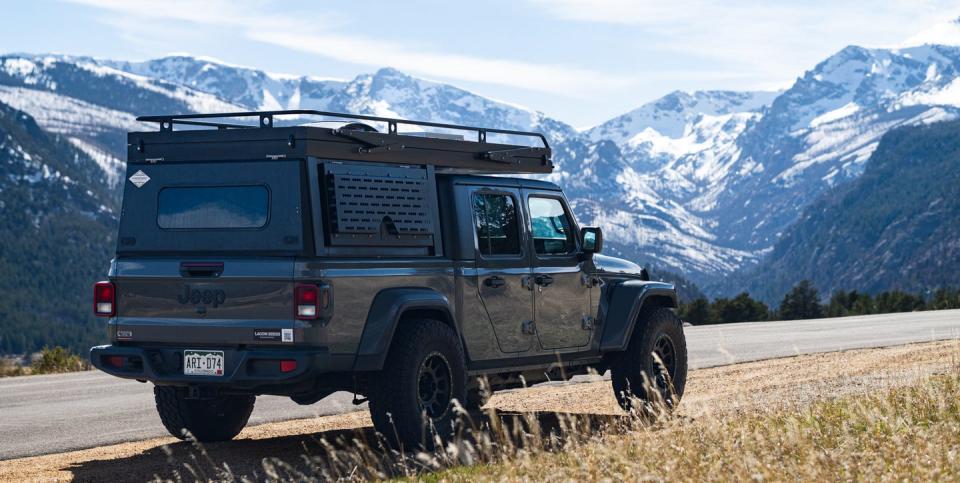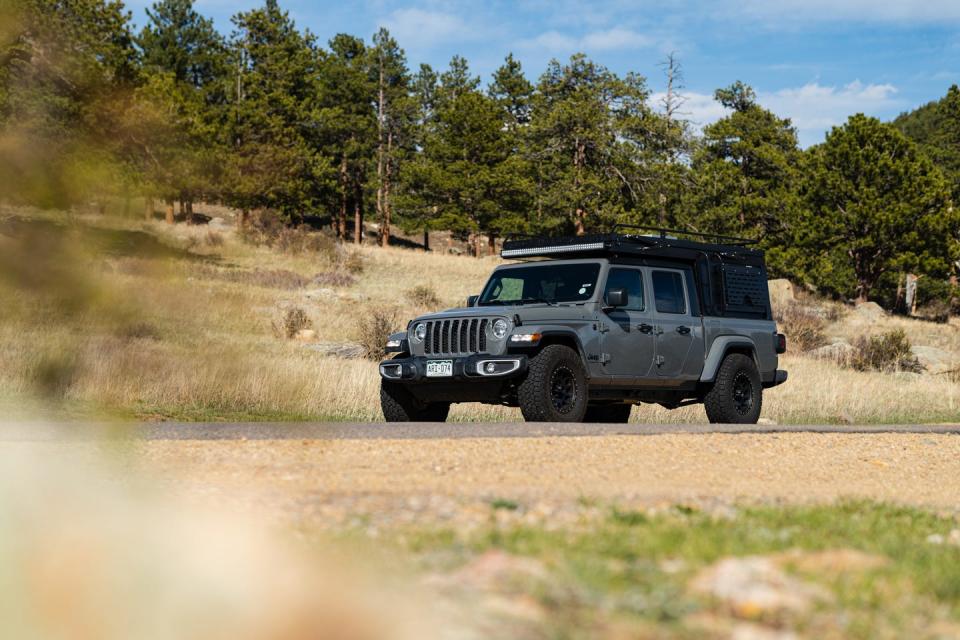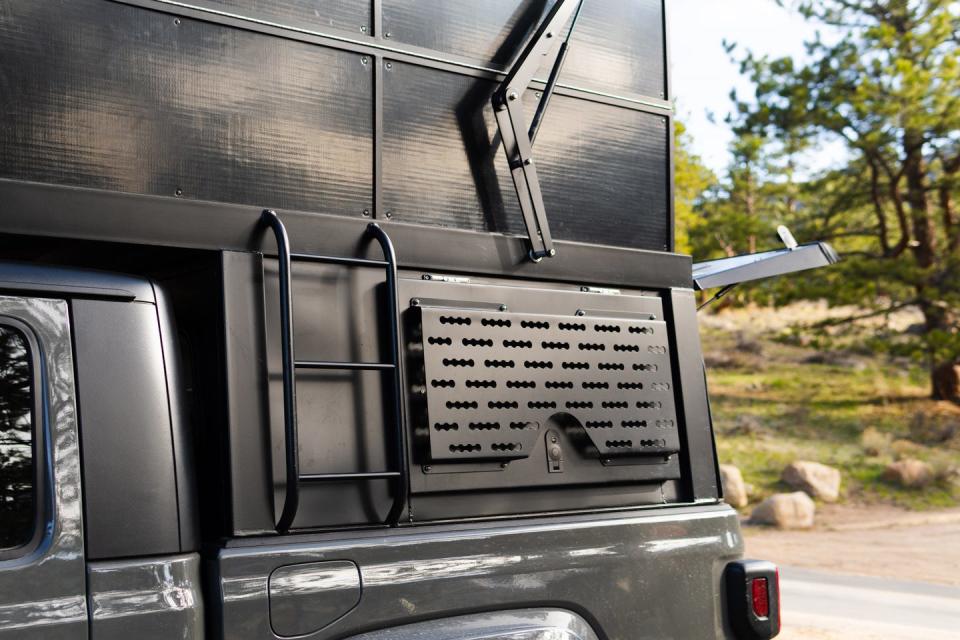The Rossmönster Lagom Solves My Rooftop Tent Complaints, For a Price

We are now in the thick of the overlapping boom. Rooftop tents are back-ordered, campsites are packed to capacity, and van and truck prices are in the stratosphere. Yet still, the question of the ultimate form of overlander hasn't been settled. Rossmonster, creators of the over-the-top Baja overlander, have just announced a new contender: the Lagom Series.
Ahead of its reveal today, we spent three days with a Gladiator Lagom in Colorado's Rocky Mountain National Park to find out if the idea holds up. And by sheer coincidence, we encountered the best situation to prove its thesis.

The centerpiece of the build is the hard-sided pop-top, available in sizes to fit the Jeep Gladiator, current Toyota Tacoma, or 2016-2020 F-150. Life a rooftop tent, it's an elevated sleeping area that keeps you away from the cold ground and doesn't intrude on your cargo space. Unlike a rooftop tent, though, the Lagom offers occupants solid walls, giant windows on either end, and a direct pass-through to the truck's bed.
That bed is also fully enclosed by the Lagom's frame, giving you a giant, lockable, covered storage area. Rossmönster also fits a Decked brand sliding storage drawer system in the bed, so your camp kitchen and recovery gear can stay tucked away in easy-to-access compartments while cargo, food, and the available Yeti Zero power system go in the general cargo area. Bedding will have to live there, too, as the topper cannot be closed with anything but the mattress on top of the vehicle. Finally, optional extras like the solar panels, Molle-style custom side panels, and an LED light bar rounded out our loaded Gladiator Lagom tester.
The tester, it must be said, looked sensational. From downtown valets to campsite neighbors, droves of people complimented, gawked at, and asked about the Lagom. One couple, in a Tacoma with a tent mounted above the bed, came over to ask about the build and ended up hanging around our fire all night. It's easy to make friends when you show up looking this cool.
Still, I wasn't sure whether the package makes sense. I'm not even convinced I need a rooftop tent, and if I did want to have one, it's easier to stomach three to four grand for a comparably sized RTT than the eye-popping $14,000 that Rossmönster asks for a Lagom upgrade. That doesn't include the integrated interior LED lights, fan, solar panels, and Yeti power system that come only on the $17k Base Plus models, nor the roof rails, Molle panels, and light bar that come as part of the $4,000 Expedition Package. I probed Paul, the owner of the Tacoma, as to whether he saw his RTT as worth it.

Sure, he said, especially when you're spending a lot of time on the road. The only real complaint he and his partner Becky have is that the thing is a nightmare to sleep in on windy nights. Buffeting nylon isn't much of a lullaby. We shared expedition stories and country songs with Paul and Becky until the temperature dipped into the thirties, May in the Rockies offering no semblance of summer. Our new friends retreated to their tent, saying goodbye and that they'd depart for Texas around eight.
My friend Faraz and I sat around the fire a bit longer, until the flaring wind burned up our last bit of firewood. We retreated into the Lagom, our hands growing numb and the rest only spared by copious layering. There we met the first two downsides of the Lagom. The first is that climbing in through the cargo area means you are inherently climbing over your cargo, so whatever you stack in the bed must be arranged to ensure safe passage. A borrowed Dometic powered cooler served as our makeshift step up, not that it was intended for that purpose. Rossmönster includes a step stool, but that was buried under our clothes and groceries.

 Yahoo Autos
Yahoo Autos 